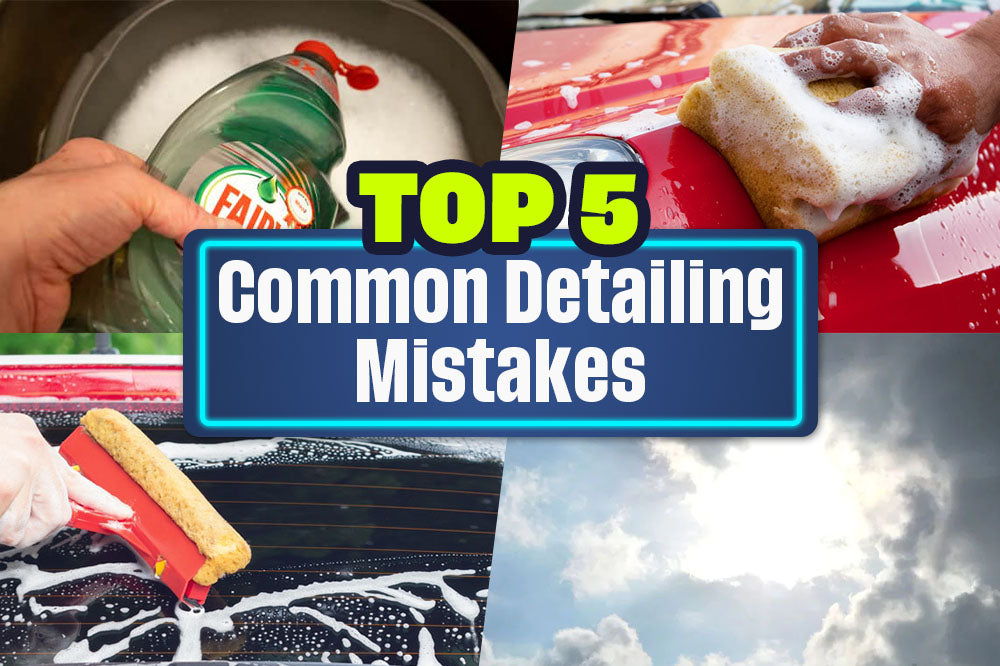My Cart
Your Cart is Currently Empty
NEXT WORKING DAY DELIVERY - ORDER BEFORE 2.30PM

You would be amazed at how often we are asked for the best method to apply a particular product or the best dilution rates of a dilutable product etc. Any reputable detailing product manufacturer will detail all critical information for you to get the best results from a product right there on the product bottle label. Why is it important to follow the instructions on the product label? Products often require diluting to the correct dilution rate to be safe or effective on a specific type of surface. Failure to follow these manufacturer instructions could force you into problems with staining or removing protection from your vehicle. For example, a pre-wash product could be LSP safe at a dilution rate of 1:20 but could quite easily strip protection at a more concentrated dilution.
For many reasons, it would be best if you stopped using chamois leather or a water blade. A chamois leather was the go-to product for drying a vehicle, along with the dreaded water blade, before microfibre drying towels were a thing. Although a little absorbent, they are too harsh to use on your paintwork and work on the principle of pushing water around the vehicle rather than safely absorbing like a Microfibre Drying Towel.
A chamois and a water blade work by dragging water, like a squeegee, towards you as you dry your vehicle. As mentioned above, the Chamois does absorb a small amount of water, but mainly, its purpose is to push the excess water from the vehicle's surface, just like the water blade. If you look at a chamois, you'll notice it is completely flat, with no pile, unlike a plush microfibre drying towel. Why is this important? Let us imagine there were still some tiny pieces of dirt remaining on the vehicle after washing. These would be picked up and potentially dragged along the car, causing scratches. As well as being a much safer way of drying your vehicle, they are also incredibly absorbent, much more so than a chamois, making them very efficient, and reducing the time needed to dry your car physically.
Most washing-up liquids are much more aggressive than regular car shampoos. They are packed full of degreasers and not so many lubricants, which are super important in a dedicated car shampoo product. Continuously using dish soap such as Fairy Liquid over time will deteriorate your car paint. There are some key things that you need to keep in mind. One of the main factors is that washing-up liquids are not made to be used on car surfaces. Therefore, your results wouldn't be near as good as those of a dedicated car-washing shampoo like Bahama Blue.
Of course, you can physically wash your car in direct sunlight, but is it advisable or best practice? Definitely not. You may be fighting a losing battle as any liquid products you apply to the car will dry before you have managed to put them to work. Cleaning your car in nice weather is more enjoyable than during the cold winter months, that's for sure. However, choosing the appropriate time and temperature conditions would be best. We recommend first thing in the morning or the evening when the sun isn't high and always try to clean in the shade when it is warm.
Washing your microfibre cloths and towels specifically for detailing purposes with a household detergent and softer fabric will be an expensive mistake you only make once! Using these household products will result in the fibres of your microfibres becoming clogged and blocked. They become much less absorbent and can often feel slightly rough to the touch, everything that we don't want when it comes to microfibres for our detailing needs. We recommend using a dedicated microfibre cleaning solution such as Laundry- Microfibre Detergent with no fabric softener and always air dry naturally or tumble dry at a very low temperature. Drying with heat will damage the fibres further, so as stated above, this is also not a recommended practice